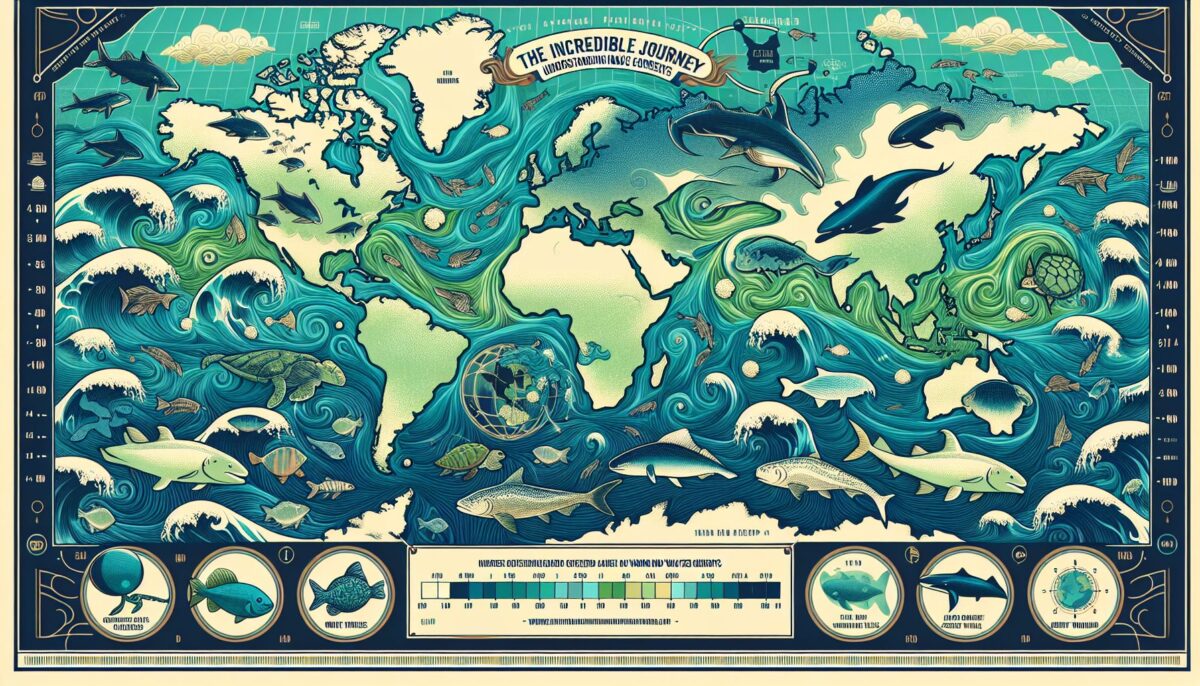In this grand planet that we inhabit, there is no uncertainty that the oceans hold a world of mystery, allure, and intrigue. A crucial component of these oceans that helps shape our climate, impacts marine biodiversity, aids navigation, and plays a significant role in maritime trade are the marine currents. Despite being unseen to the naked eye, these currents carry immense influence on the world we see today.
The Nature of Marine Currents
Marine currents consist of continuous, directed movements of ocean water generated by distinctive forces acting upon this water¹. These forces – including the wind, temperature variations, and salinity differences – result in the movement of significant volumes of water around our globen².
This movement is not just along the surface; currents also flow deep underwater. They occur on both small and large scales, from tiny ripples to vast whirlpools. Such currents foster a dynamic and complex labyrinth of swirling waters, a spectacle of nature’s might.
The Role in Climate Regulation
An essential function of marine currents involves the regulation of the Earth’s climate³.
Large-scale currents like the Gulf Stream and the Kuroshio Current transport warm water from the tropics to the poles. Conversely, cold currents like the Labrador Current and the Humboldt Current carry cool polar water towards the equator. This complex thermal exchange aids in maintaining the Earth’s overall temperature balance.
Impact on Marine Life and Biodiversity
Marine currents have an immense influence on marine life and biodiversity. They play a significant role in the distribution of nutrients and oxygen throughout the ocean, thereby determining the abundance and diversity of marine organisms.
Marine currents also impact migration patterns for a variety of creatures, and they can transport young organisms from spawning grounds to habitats. Hence, understanding currents is pivotal in marine biology studies.
Role in Navigation and Maritime Trade
For centuries, seafarers have harnessed the marine currents to their advantage. Particularly in the age of wind-driven voyages, sailors understood that using the current efficiently would save time and resources. Even in this era of motorized vessels, a knowledge of currents can fuel efficient navigation.
Moreover, the understanding of marine currents is crucial to maritime trade. Currents can impact shipping routes, influence the duration of voyages, and contribute to the successful operation of ports and harbors.
Currents and Offshore Drilling
In offshore drilling operations, currents play a crucial role. Current data is essential in the planning and operational stages of offshore projects. Currents can significantly influence the dynamics of drilling risers and the stability of the entire drilling unit.
Furthermore, in the unfortunate event of oil spills, understanding the nature of the currents is a paramount factor in efficient oil spill cleanup operations, as they determine the direction and speed of the oil spill spread.
The Future of Marine Currents
As our planet is undergoing significant climate change, marine currents too might be subject to changes. Scientists are tirelessly working on models and simulations to predict these alterations. The more we understand about marine currents, the better we can anticipate their future behavior.
Instruments such as Acoustic Doppler Current Profilers (ADCPs), current meters, and satellite tracking technologies such as Global Navigation Satellite Systems (GNSS), are being utilized to collect valuable data about currents. These methods help to better our understanding of these phenomenal processes and their impact on our world.
In conclusion, marine currents are an integral element in our world’s functioning—both underwater and on the surface. They guide sailors, nourish marine ecosystems, and even manage our climate. Whether they’re sweeping from the Arctic chill or the Pacific warmth, marine currents open up new routes and paint our oceans with life.
